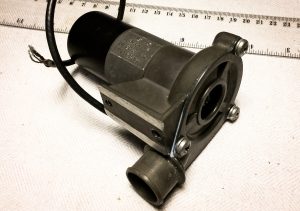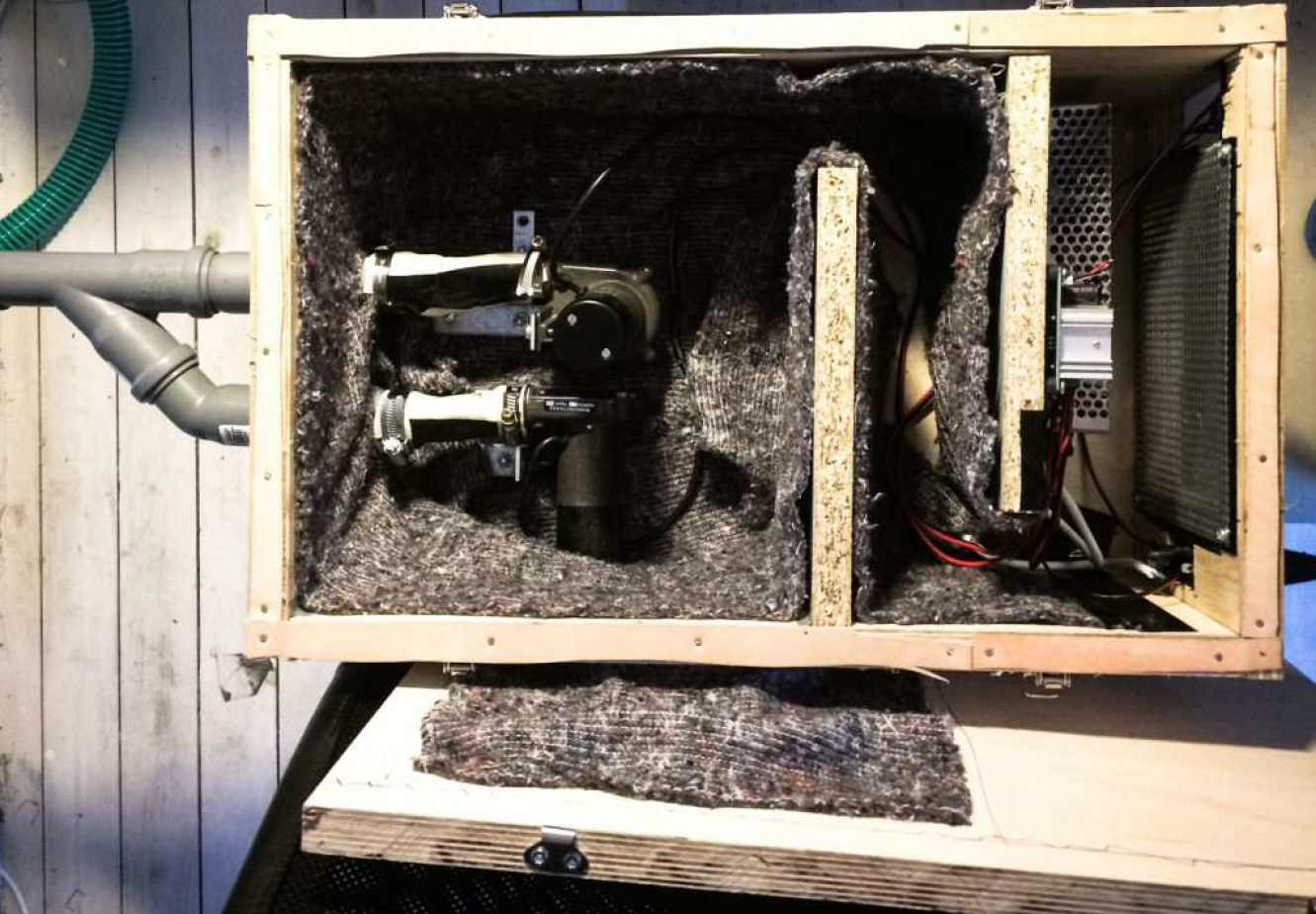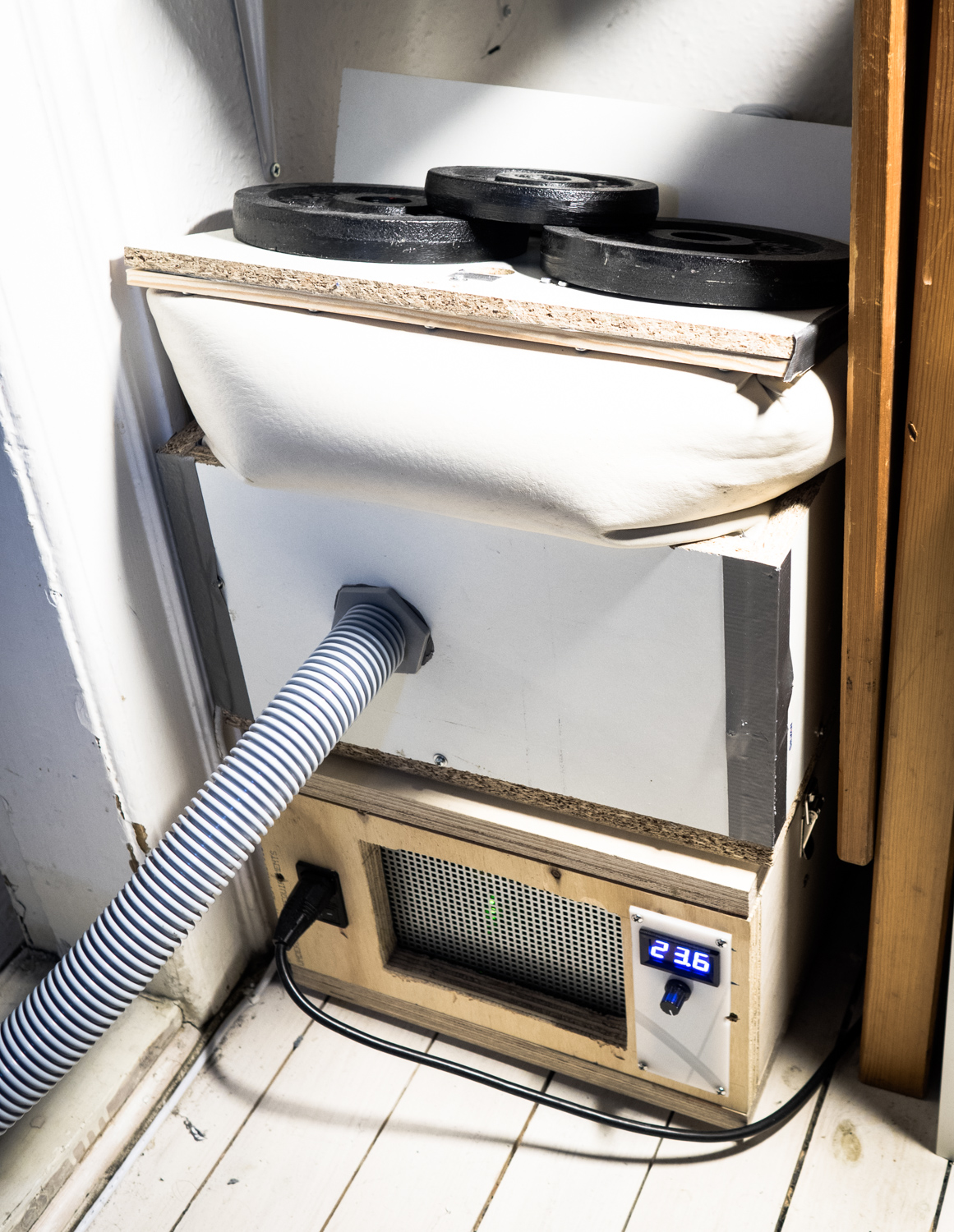Note: This blower project has been replaced with the newer and larger PipeWind v.2. However, PipeWind v.1 was our test blower project, and there was much to be learned from it, so we keep the project page.
While building the PipeDream24 test organ, we needed a steady air supply. There are three major requirements of an organ blower: air flow, pressure and low noise. While the latter is “nice to have” in our context, the other two are quite essential. So, we had to build a small organ blower with reservoir and pressure regulator.
Read more about the organ wind system basics in PipeWind page, and about the newer PipeWind v.2 wind system.
BLOWER
Unfortunately, pipe organ blowers are not something you stumple upon every day, and if you find one, it’s usually much too expensive or much too big for our use. Luckily I found a guy on ebay who sold old 24 V blowers designed for cooling military radar equipment.
These blowers are rather small, but they really deliver. They provide plenty of pressure, and can be arranged in parallel to provide higher air flow if needed. They are perfect, except for being a bit noisy, as they clearly aren’t designed for pipe organ use. So, first we’ll have to build a suitably noise-reducing enclosure.
We built a box of fairly thick and heavy plywood boards. In the image to the left, the blower(s) will be placed in the top area where the exhaust pipe is. The air intake is at the bottom part, behind a pair of baffles to reduce the external blower noise.
In the final blower box we installed two parallel blowers. The blowers are mounted to the blower box bottom through rubber vibration reduction couplers, and the air outputs are connected to the exhaust ports through leather manifolds. This reduces the transmission of vibrational noise to the box.
The insides of the box is covered with thick pieces of carpet to further reduce noise and reverberation. Just inside the air intake is a switching power supply and a DC motor controller to control the blowers.
The blower box itself proved very fairly silent, but the internal noise, i.e. the blower noise transmitted through the air stream out to the regulator, proved to be quite significant. And the regulator is not soundproof. This is a valuable lesson for our next blower (see PipeWind v.2).
PRESSURE REGULATOR AND RESERVOIR
Building a pressure regulator was a bit more difficult than the blower box, and again we aimed to make it as simple as possible. Here is an early sketch of the regulator principle. A sizeable enclosure as reservoir with an air intake (from blower) at one end and a matching exhaust port (to windchest) at the other end.
The regulator itself is implemented as a simple hinged lid bellows. We used soft leather for the bellows extension. The bellows is weighted to regulate the output pressure.
A simple over-pressure valve is placed in the hinged lid/bellows to open an exhaust to the outside atmosphere when the bellows is fully extended. This guarantees a constant non-blocking air flow from the blowers without compromising operational pressure.
Here is the regulator (fully weighted and pressurized for 3″ w.c.), placed on top of the blower box:
The pressure regulator works pretty well for what it was intended, but as mentioned above, the blower noise is transmitted through the air-channel into the regulator box. Until we build a better blower/regulator system, we’ll have to place PipwWind v.1 in another room and lead the air through plastic tubes.
This, of course, has a price, and the price is loss of final pressure in the windchest and slower regulator reaction time to changes in air flow. This is clearly heard in the PipeDream24 sound demo at the top of the page. Now, this demo were made with only one blower installed, and there are a lot of other reasons why the demo sounds as it does, but low air flow and too small air transport tubes are definately contributing factors. It’s especially pronounced at the final 5-note chord that includes the air-hungry D3 and G2 pipes. Here the pressure drops resulting in a severe pitch drop.
Next: Read about the PipeWind v.2 upgraded blower system





